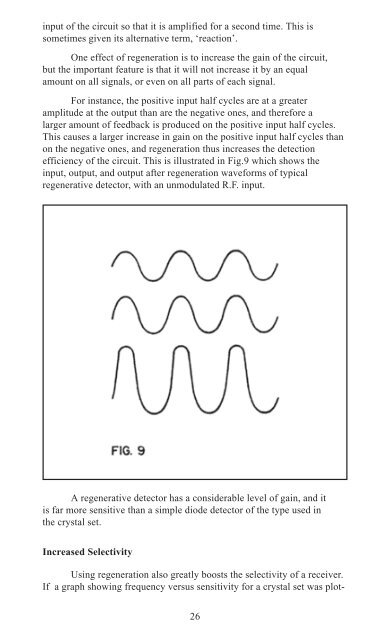Solid State Shortwave Receivers For Beginners - The Listeners Guide
Solid State Shortwave Receivers For Beginners - The Listeners Guide
Solid State Shortwave Receivers For Beginners - The Listeners Guide
Create successful ePaper yourself
Turn your PDF publications into a flip-book with our unique Google optimized e-Paper software.
input of the circuit so that it is amplified for a second time. This is<br />
sometimes given its alternative term, ‘reaction’.<br />
One effect of regeneration is to increase the gain of the circuit,<br />
but the important feature is that it will not increase it by an equal<br />
amount on all signals, or even on all parts of each signal.<br />
<strong>For</strong> instance, the positive input half cycles are at a greater<br />
amplitude at the output than are the negative ones, and therefore a<br />
larger amount of feedback is produced on the positive input half cycles.<br />
This causes a larger increase in gain on the positive input half cycles than<br />
on the negative ones, and regeneration thus increases the detection<br />
efficiency of the circuit. This is illustrated in Fig.9 which shows the<br />
input, output, and output after regeneration waveforms of typical<br />
regenerative detector, with an unmodulated R.F. input.<br />
A regenerative detector has a considerable level of gain, and it<br />
is far more sensitive than a simple diode detector of the type used in<br />
the crystal set.<br />
Increased Selectivity<br />
Using regeneration also greatly boosts the selectivity of a receiver.<br />
If a graph showing frequency versus sensitivity for a crystal set was plot-<br />
26

















